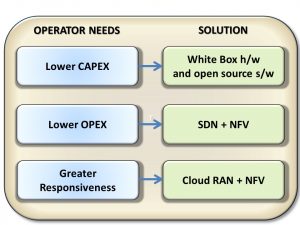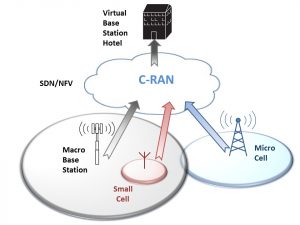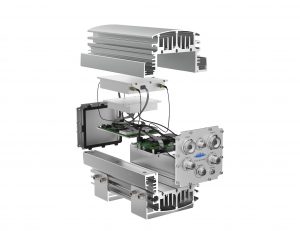In wired networking, white box and bare metal switches are starting to make steady headway. Lessons from these applications point the way for a similar tsunami ahead in wireless networking.
Let’s start by describing white boxes as equipment produced by original design manufacturers (ODMs) usually fitted with a software stack, such as a network operating system, while bare metal switches are commodity products that may be produced by a more established vendor. The differences are less important than understanding that the standardized hardware is typically built using commodity silicon and shipped without proprietary software. (And just to add to confusion, some vendors have changed from using “white box” to “bright box”).
Both wired and wireless network operators have similar objectives. They want to reduce the capital expenditure (CAPEX) and the recurring operational costs (OPEX), as well as being more responsive in the ever changing network environments.
CAPEX reductions come from a much lower initial purchase price for the equipment. Some tier 1 vendors, such as Dell and Brocade, offer bare metal switches. ODMs generally carry lower R&D costs and use generic merchant silicon, and these savings allow them to offer aggressive pricing. However, because the software is decoupled from hardware, the operator has to factor in the cost of installing and configuring the software onto the box. Although this may initially be out of their comfort zones, they benefit by bringing this expertise in-house to further increase their independence from vendor “lock-in”. Indeed, some heavy users such as Google and Facebook companies are designing and building their own switches.
In contrast, telcos and cable operators historically bought infrastructure equipment from a vendor that supplied both proprietary hardware and software. The convenience of this has to be offset against being reliant on a vendor for any software or hardware upgrades. This vertically integrated model forces a vendor lock-in which is, of course, maintained for the service life of the equipment.
The advent of white box hardware from vendors coincides with the twin software trends towards software defined networks (SDN) and network function virtualization (NFV). With SDN, the control and data planes are separated to provide a more flexible management regime. NFV allows network operators to migrate from manual towards a more automated way of engineering and operating their networks. They can control and orchestrate the network to rapidly provide the currently required configuration using a cloud paradigm. These reduce the OPEX costs and provide the ability to speedily adapt networks to changing demands.
Many operators are currently cautiously introducing SDN and NFV on a step-by-step basis alongside their existing networks so that they can learn and experience the benefits of the technologies. Already some telcos are able to differentiate themselves from their competitors by demonstrating an improvement in ‘provisioning cycle times’ of virtual networks to responsively meet customer demands. This agility at providing service also leads to a quicker time to revenue.
Open Source Software
An open source policy is a key ingredient in the SDN/NFV combination. This provides the operators with the flexibility to modify and tune the network to optimize the performance. It also avoids the vendor lock-in and lack of interoperability with other equipment that is inherent with proprietary systems. Adopting an open source policy allows network operators to select from a broad vendor ecosystem.
Multiple software initiatives range across the SDN/NFV spectrum. For example, an open control plane solution that is Linux-based is called OpenDaylight (ODL). ODL communicates northbound with the application/orchestration layer, and southbound to the data plane layer of physical or virtual devices. Virtualization is provided by software like Open vSwitch (OVS) amongst others. OVS is also Linux-based and provides network management via the Open vSwitch Database protocol and supports features such as tunnelling, policing and link aggregation. OpenFlow is an example of a centralized packet switching protocol. It interacts with routers and switches to optimize network-wide control and determine how to efficiently route the traffic on the network. The Open Network Functions Virtualization (OPNFV) project is attempting to combine several open source packages together for NFV. Other important open source software includes OpenStack, ONOS and OpFlex.
The momentum in the industry, and the potential benefits to operators has led AT&T to invest in an open source effort called Open Networking Lab which has produced the Open Network Operating System (ONOS). Open source benefits from inputs made by many of the largest communications entities, who are constantly balancing their open source contributions and the strategic interests of their company. One thing seems certain, that the open source community will continue to innovate and steadily improve a wide range of aspects, such as installation, security, reliability, testing and QoS and freely share to the benefit of all.
Wireless Networks
The realities of vendor lock-in and limited flexibility are just as prevalent in wireless networks, if not even more crucial.

Wireless networks are undergoing a significant transformation as LTE (also known as 4G) rolls out, with massive further changes expected for 5G. The classic configuration of a small number of macro base stations has been replaced with a complex mix of macro and a variety of small cells. The advent of 3G saw base station functionality centralized and separated from the towers by using remote radio heads (RRHs) located at the antenna. The RRH takes digital data from a fibre or microwave link and processes it into the analog RF for broadcasting, which reduces losses in the cable and saves on the cost of cooling. The RRHs are also cheaper to site with their reduced footprint, as planning consent is less arduous and the acquisition of sites such as rooftops or light posts is much easier. Small cells, in comparison to RRHs, feature more of the baseband processing along with the RF circuitry integrated into a single unit.
Many of the small cells are expected to be located in enterprise and home locations, and connect into the cellular network via a mix of internet or microwave backhaul links. This brings a new dimension to the cellular system. The LTE specification includes the provision for operators to move to a new cellular arrangement known as Heterogeneous Wireless Networks (or HWN). An HWN comprises equipment using different underlying radio access technology, such as 2G, 3G and 4G. The small cells sit inside the coverage of the macro system, and act as offloads for the macro. Excellent examples of sites that have heavy usage in a very local area are shopping malls and airport terminals. These are ideal for small cell offloads. In the central business district of cities there is heavy demand during the working day, yet light traffic at night.
Wireless networks are moving towards cloud radio access network (C-RAN). This evolution allows a greater concentration of centralized baseband processing and wider use of RRHs and small cells, along with NFV of the resources. The fluctuating nature of the load potentially allows the C-RAN configuration to be dynamically reconfigured to give optimum user experience. For example, C-RAN enables LTE Advanced features such as carrier aggregation and Coordinated Multipoint (CoMP). With CoMP, the system sends and receives data to and from a single user using several base stations to optimize the performance. This is particularly important when the user is at the edge of the cells as it enhances the experience and reduces the number of dropped calls. It can also offload traffic from a busy base station and use less loaded neighboring cells.
Cellular operators, therefore, are undergoing seismic technical changes spanning network architecture, C-RAN, traffic loads and cost pressures. So what has inhibited the emergence of white boxes for wireless networks?
Again, the answer can be derived from looking at the success of white boxes for wired networks. These are enabled by the availability of both standardized hardware and open source software, as previously discussed. The hardware typically comprises programmable silicon from processor vendors.

Open source wireless hardware
The hardware for wireless systems is less straightforward for several reasons. Firstly, the cellular frequency allocations vary around the world, so that a white box vendor would need to cater for this variation. Even within a single country, different frequencies may be used by competing cellular operators and they may require, say, coverage for bands around 800 MHz, 1800 MHz and 2600 MHz and non-contiguous bands. There are different channel access and data transmission technologies, such as TDMA, CDMA and OFDMA as well as TDD and FDD systems. These are configured by the baseband chip and supplied to the RF circuitry for transmission and reception.
In both cases, the key to a white box solution is to have the maximum amount of programmability in the hardware.
Programmable hardware
The baseband requirement can be met by a range of Field Programmable Gate Arrays (FPGA) from vendors such as Altera and Xilinx. As an example, Altera offers low-cost Cyclone V FPGAs that come with a range of different sizes and configurations. These include devices that boast both ARM processors and programmable logic on a single chip, termed SoC FPGAs, which offer a highly flexible solution for white boxes. Tasks such as selecting the channel access and transmission standard can be programmed using high level abstraction tools such as OpenCL to efficiently create C code for the ARM. The processor can run the open APIs that interface with the open source SDN software. Designers also have the choice of more powerful FPGAs, such as Arria 10 devices, which feature high performance dual-core ARM processors and plentiful logic and connectivity resources.
The white box can be designed to operate with the most demanding air interfaces in the 4G standard. In these cases more processing power can be required, and the FPGA can be supplemented with a general purpose processor (GPP). The processing can be shared because the tasks can be partitioned between the FPGA to tackle the algorithmic acceleration, and the GPP that handles sequential tasks such as processing higher level protocols.
Programmable RF is more tricky, but, recently introduced Field Programmable Radio Frequency (FPRF) devices from Lime Microsystems and software-defined radio (SDR) solutions from ADI provide the answer. These highly integrated chips contain complete transceivers that are programmable on the fly across all the cellular frequencies. Characteristics like the bandwidth and gain are also fully programmable, making FPRFs amazingly flexible wireless solutions.
Fortunately, Lime Microsystems is heavily committed to open sourcing, and provides full visibility into how engineers can program its silicon. Open source hardware allows the freedom to study, share and modify designs, and to sell products that are built using those designs. This openness permits engineers to innovate with FPRF devices in a way similar to how designers have used FPGAs. The flexibility of FPGAs has led to them being used in numerous applications, and spawned an industry segment worth $4B. This is far ahead of the nascent FPRF market, of course, but already FPRFs have been used in infrastructure projects to bring cellular connectivity to remote areas, as well as to build small cells and even enhancing a PC to act as a cellular base station. An example from Fairwaves is a self-contained cellular base station. It comprises a complete mobile network in a single tower mounted base station. The product leverages open source hardware and software to provide up to 30 concurrent calls along with a system management console, dynamic network information and billing.

White box wireless transceivers can be included into infrastructure in what is termed a self-organizing network (SON) and can be physically located wherever adequate power and backhaul services are available. The concept of a SON is that the equipment analyzes the wireless environment and decides what frequencies and power levels to use so that it does not cause interference.
Optionally, the frequency and bandwidth data could be downloaded to the wireless white box firmware via the SDN software. In this way, the complexity of the white box design can be reduced, and the network operator has full control. It also means that the equipment can be shipped and installed without the necessity and added cost of being personalized to the operator’s network. This provides the white box manufacturer with greater economy of scale and fewer inventory issues.
Operators can make even greater OPEX savings because firmware upgrades can be downloaded remotely. This means that new features or updates to the wireless characteristics and frequencies can be implemented without the need for a truck roll.
FPRF devices provide the possibility for ODMs and others to enter the wireless infrastructure market. Wireless carriers are always looking for ways to enhance operational efficiency and replace manual controls with automation. As carriers develop their strategy of deploying SND/NFV on a step-by-step basis, they have the opportunity to introduce white box equipment into their network using the open source code as the interface between the programmable FPRF and FPGA hardware and middle-ware.
